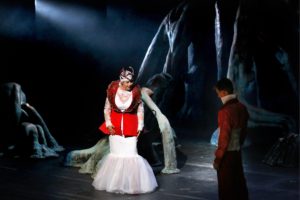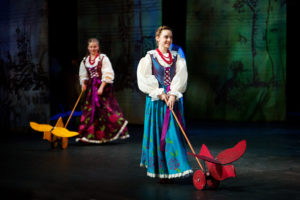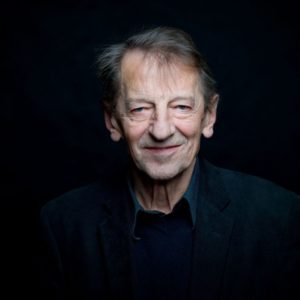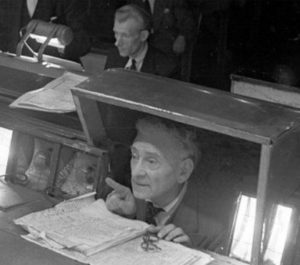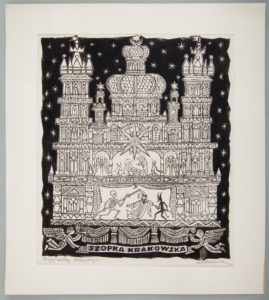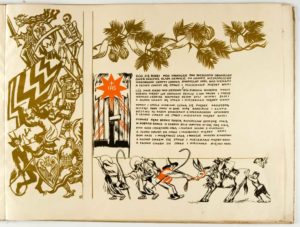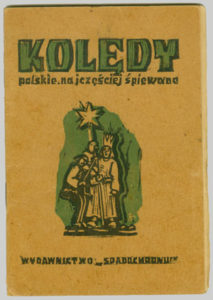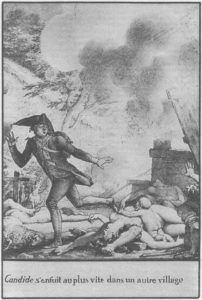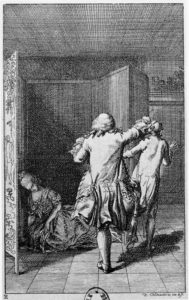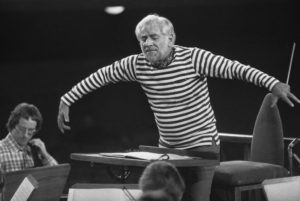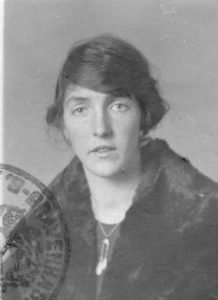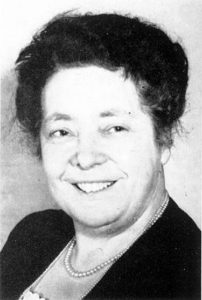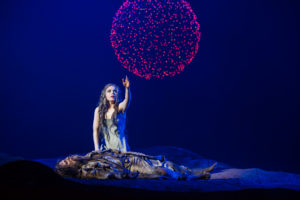Wstrzymajcie się, kłótniki!
Nie ma sensu w kółko powtarzać, jak bardzo nienawidzimy siebie, swojej tradycji, kultury, a nawet języka. Ostatnio – zaiste po mistrzowsku – zanalizował ten fenomen Adam Leszczyński, w książce No dno po prostu jest Polska. Na którą Polacy zareagowali w sposób potwierdzający niemal każdą tezę wysuniętą przez autora, czyli rzucając się sobie nawzajem do gardeł. Ilekroć można by się w jakiejś kwestii pogodzić, zjednoczyć wysiłki albo po prostu pozwolić bliźniemu żyć, jak umie i lubi – tylekroć wychodzą z nas masoni i cykliści, lewacy i prawacy, chamy i ćwierćinteligenci, żydzi i pedały. Przynajmniej zdaniem naszych oponentów, którzy z definicji podążają drogą jedynie słuszną i nie mają zamiaru od niej odstąpić, choćby urywała się nad przepaścią.
Oczywiście można się było spodziewać, że w okolicach jubileuszu niepodległości znów rozgorzeją spory o Krakowiaków i Górali Stefaniego/Bogusławskiego – leciutki, bezpretensjonalny wodewil, który Leon Schiller nazwał nieopatrznie pierwszą operą narodową. Wyrządził mu tym krzywdę na długie lata, bo jednym kojarzył się odtąd wyłącznie z patriotyczną rogatywką i wrażą ciupagą, innym zaś – ze straszliwym obciachem. W półtorarocznym odstępie pojawiły się na polskich scenach dwie inscenizacje, które w zasadzie powinny pogodzić strony konfliktu – pierwsza na małej scenie TW-ON, w ramach Programu Kształcenia Młodych Talentów, przy okazji obchodów 250 lat teatru publicznego; druga w Operze Wrocławskiej, na początek tak zwanego roku polskiego. Realizatorzy obydwu deklarowali skrajnie odmienne podejście do materii teatralnej dzieła – przy jednoczesnej próbie powrotu do pierwotnego tekstu partytury. Czyli dla każdego coś miłego, w połączeniu z obietnicą dochowania jakiej takiej prawdy historycznej.
I pewnie nikt by nie protestował, gdybyśmy nie mieli kompleksów i szczerze cenili swoją tradycję muzyczną. A tak zrobiła się mała wojenka, w której po przeciwnych stronach barykady stanęli wrogowie obydwu przedstawień. Jedni zżymali się na konserwatyzm i cepeliadę warszawskiego spektaklu w reżyserii Jarosława Kiliana, drudzy rwali włosy z głowy, że Barbara Wiśniewska dokonała we Wrocławiu zamachu na świętości narodowe. Dyskusji o muzyce właściwie nie było, bo Krakowiacy i Górale są modelowym przykładem utworu, o którym wszyscy słyszeli, za to którego nikt w Polsce nie zna.
Krakowiacy i Górale w Operze Wrocławskiej. Fot. Marek Grotowski.
Tymczasem jest to utwór skomponowany zgrabnie, z dobrym librettem, stosunkowo łatwy do zagrania i zaśpiewania – a przez to wdzięczny w odbiorze i bardzo kształcący dla młodych adeptów sztuki operowej, którzy mogą na nim szlifować podstawy warsztatu. Gdybyśmy swoją muzykę naprawdę lubili, na naszych scenach – także studenckich i amatorskich – dosłownie roiłoby się od przedstawień Krakowiaków. W najrozmaitszych wersjach i wykonaniach: na instrumentach dawnych i nowych, z dopisywanymi ad hoc kupletami, z tańcami i bez tańców, w prostych i bardzo skomplikowanych dekoracjach. Ani to ramota, ani arcydzieło. Z pewnością jednak rzecz warta pozostania w codziennym obiegu muzycznym – zwłaszcza w kraju, który nagminnie niszczy i przekłamuje własną historię.
Byłam na obydwu spektaklach i z obu wyniosłam na ogół pozytywne wrażenia – mimo diametralnych różnic w podejściu do dzieła. Warszawski Cud albo Krakowiaki i Górale to przedstawienie tradycyjne, „dejmkowe” z ducha, niemniej bardzo spójne i stawiające przez wychowankami Akademii Operowej szereg istotnych wymagań. Wbrew pozorom podawanie tekstu klarownie i ze zrozumieniem nie należy do podstawowych umiejętności polskich wokalistów, nie wspominając już o sztuce śpiewania w biegu i podczas wycinania siarczystych hołubców. Nauczą się teraz na Stefanim i Bogusławskim, z czasem przyda im się w operach Verdiego i Wagnera, w realizacji scen o zupełnie innym charakterze. Wrocławscy Krakowiacy dowiedli z kolei, że z tą rzekomą ramotą można jednak wejść w dyskurs, poprowadzić ją w nieco innym kierunku – nawet jeśli młoda reżyserka tu i ówdzie ugrzęzła na mieliźnie. Obie inscenizacje przywiodły mnie zresztą do zaskakującego wniosku: że mimo upływu dwustu lat z okładem wodewil wciąż wywołuje żywe reakcje publiczności – zarówno tych widzów, którzy szukają w nim uniwersalnego przesłania, jak i tych, którzy przyszli do teatru z nadzieją na kawał porządnej rozrywki.
Co do poszukiwania prawdy historycznej w partyturze, sprawa też jest otwarta. Jak Krakowiacy zabrzmieli na prapremierze w 1794 roku, nie dowiemy się nigdy. Zachowany rękopis Stefaniego jest wersją po kolejnych przeróbkach kompozytora. W Warszawie wskrzeszono autorską wersję Władysława Kłosiewicza z 1999 roku – prowadzoną od klawesynu, graną na instrumentach dawnych, ale w składzie i stylistyce, które zapewne nie mają wiele wspólnego z praktyką wykonawczą teatrów polskich przełomu XVIII i XIX wieku. We Wrocławiu orkiestra instrumentów współczesnych wystąpiła pod batutą Adama Banaszaka, który skorzystał z najnowszej źródłowej edycji materiału i postanowił dowieść słuchaczom, że w tych nutach więcej Mozarta, Cimarosy i Salieriego niż późnego baroku i dyskusyjnych „folkloryzmów”. Kto ma rację? Wszyscy i nikt. Przy obecnym stanie badań nad twórczością Stefaniego wciąż trudno o jednoznaczne rozstrzygnięcia, za to nic nie stoi na przeszkodzie, żeby interpretować Krakowiaków muzykalnie, ze smakiem i poszanowaniem dramaturgii utworu.
Cud albo Krakowiaki i Górale w TW-ON. Fot. Krzysztof Bieliński.
Atutem obu przedstawień jest ich oprawa wizualna – w TW-ON scenografia Izabeli Chełkowskiej, „oświeceniowo-masońska”, a zarazem nawiązująca do legendarnych projektów lalkowych Adama Kiliana, ojca Jarosława; w Operze Wrocławskiej zachwycające dbałością o detal kostiumy Mateusza Stępniaka. Do obu koncepcji walnie przyczynili się choreografowie: w Warszawie doświadczony tradycjonalista Emil Wesołowski, we Wrocławiu – związany z teatrem mimu Anatoliy Ivanov. I tu, i tam usłyszeliśmy i obejrzeliśmy kilka świetnych kreacji wokalno-aktorskich. O Wrocławianach już pisałam, wspomnę zatem ciepło o warszawskim Jonku (Rafał Polek) i Bardosie (Damian Wilma). Paradoksalnie, bardziej stylowo grała orkiestra Opery Wrocławskiej. Paradoksalnie, więcej ludowych smaczków udało się wyciągnąć muzykom orkiestry barokowej pod kierunkiem Kłosiewicza.
Teraz pozostaje już tylko rozstrzygnąć, które przesłanie pasuje lepiej do naszej rzeczywistości: czy to Krakowiacy „przed wielką nawałnicą”, jak pisał o dziele swego dziadka Władysław Bogusławski, czy też napomnienie, że „gdzie prostota, tam jeszcze szczera zostaje cnota”, jak wyśpiewuje chór w finale III odsłony. A może by tak nic nie rozstrzygać? Może w zamian docenić, że w skarbcu naszej tradycji muzycznej mamy dziełko tak wdzięczne w wykonaniu i obróbce teatralnej? Może wreszcie się pośmiać, że twórcą naszej „pierwszej opery narodowej” jest Czech, a pierwsze naprawdę stylowe nagranie wodewilu powstało w ubiegłym roku w Pradze, z udziałem słynnego Collegium 1704 pod batutą Václava Luksa, Krystiana Adama Krzeszowiaka, którego doceniliśmy w Polsce dopiero po tym, jak „odkrył” go John Eliot Gardiner, oraz Tomáša Krála, którego polskim melomanom przedstawiać nie trzeba? Lepiej się powstrzymam od dalszych sugestii, bo znów usłyszę, że mam kompleksy i szukam zieleńszej trawy u sąsiada za płotem.

